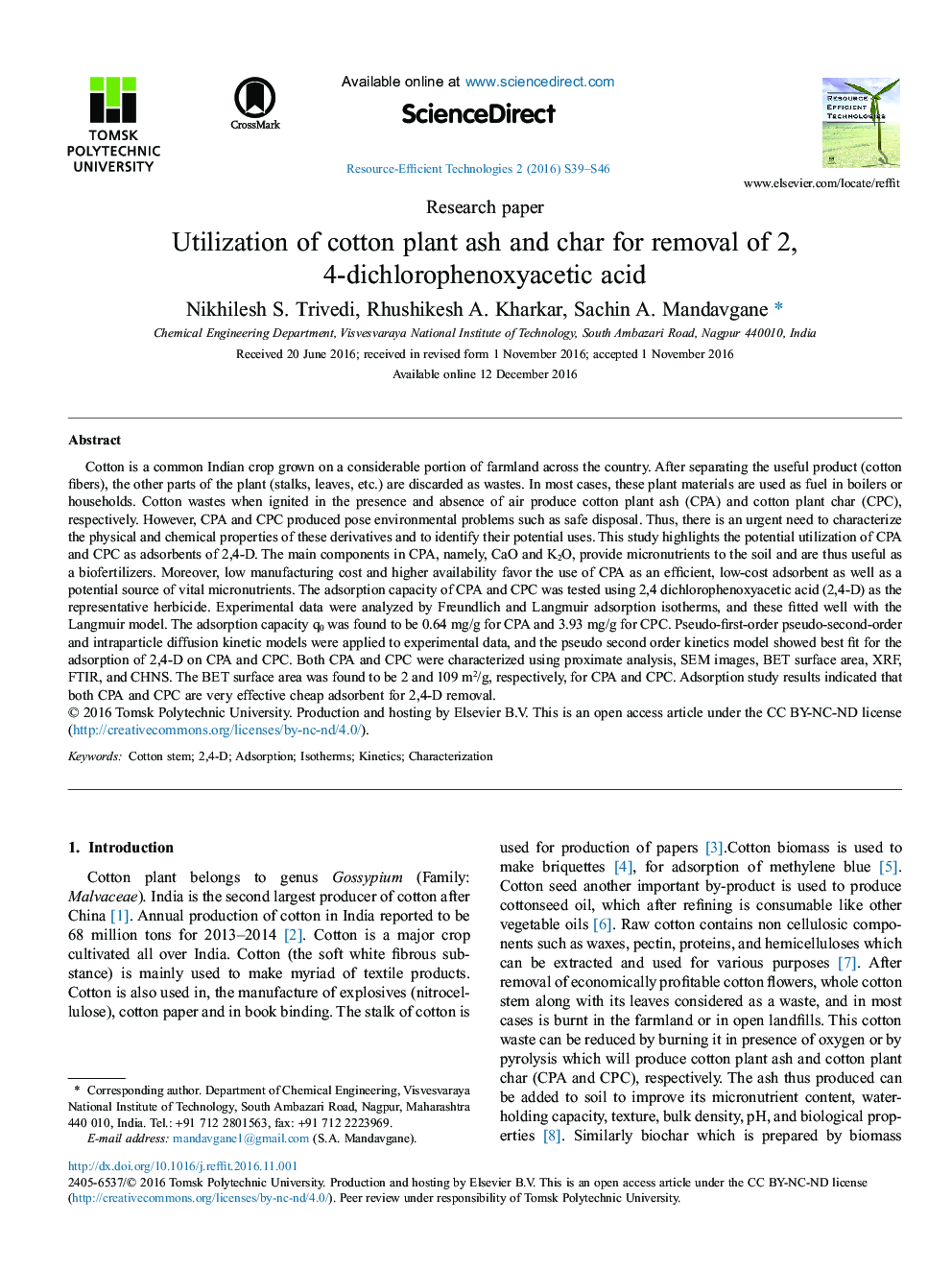| کد مقاله | کد نشریه | سال انتشار | مقاله انگلیسی | نسخه تمام متن |
|---|---|---|---|---|
| 5749682 | 1412485 | 2016 | 8 صفحه PDF | دانلود رایگان |

Cotton is a common Indian crop grown on a considerable portion of farmland across the country. After separating the useful product (cotton fibers), the other parts of the plant (stalks, leaves, etc.) are discarded as wastes. In most cases, these plant materials are used as fuel in boilers or households. Cotton wastes when ignited in the presence and absence of air produce cotton plant ash (CPA) and cotton plant char (CPC), respectively. However, CPA and CPC produced pose environmental problems such as safe disposal. Thus, there is an urgent need to characterize the physical and chemical properties of these derivatives and to identify their potential uses. This study highlights the potential utilization of CPA and CPC as adsorbents of 2,4-D. The main components in CPA, namely, CaO and K2O, provide micronutrients to the soil and are thus useful as a biofertilizers. Moreover, low manufacturing cost and higher availability favor the use of CPA as an efficient, low-cost adsorbent as well as a potential source of vital micronutrients. The adsorption capacity of CPA and CPC was tested using 2,4 dichlorophenoxyacetic acid (2,4-D) as the representative herbicide. Experimental data were analyzed by Freundlich and Langmuir adsorption isotherms, and these fitted well with the Langmuir model. The adsorption capacity q0 was found to be 0.64âmg/g for CPA and 3.93âmg/g for CPC. Pseudo-first-order pseudo-second-order and intraparticle diffusion kinetic models were applied to experimental data, and the pseudo second order kinetics model showed best fit for the adsorption of 2,4-D on CPA and CPC. Both CPA and CPC were characterized using proximate analysis, SEM images, BET surface area, XRF, FTIR, and CHNS. The BET surface area was found to be 2 and 109âm2/g, respectively, for CPA and CPC. Adsorption study results indicated that both CPA and CPC are very effective cheap adsorbent for 2,4-D removal.
Journal: Resource-Efficient Technologies - Volume 2, Supplement 1, December 2016, Pages S39-S46